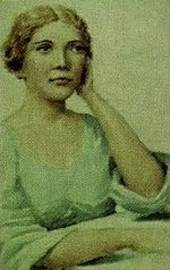Subject Guide

Mountain West
Malachite’s Big Hole
Narcissa Whitman and Eliza Spalding:

Narcissa Whitman
Narcissa Whitman was described as blue-eyed, of fair skin and complexion, large framed yet attractive, cheerful, outgoing and enthusiastic. Eliza Spalding was very different in appearance and temperament, being dark and coarse-featured, frail and sickly, withdrawn, serious, yet with stubborn fortitude and steely resolve. Both women created a sensation among the trappers, who suddenly discovered an interest in religion, attending daily services and eagerly accepting Bibles. The Mountain Men were especially enamored of Narcissa with her bubbly enthusiasm. The Indians, particularly the Indian women found more in common with Eliza who was learning their language even before leaving rendezvous. Of the missionary women, trapper Osborne Russell records “The two ladies were gazed upon with wonder and astonishment by the rude Savages they being the first white women ever seen by these Indians and the first that had ever penetrated into these wild and rocky regions.”
On the arrival of the missionary party in the Oregon Territory, John McLoughlin, Chief Factor for the Hudson’s Bay Company at Fort Vancouver, was as enchanted by the women as the mountain men and Indians had been at the rendezvous. The missionaries were treated with great hospitality by the Hudson’s Bay Company, and McLoughlin even provided assistance in establishing their missions.
The Spaldings built their mission on the Clearwater River among the Nez Perce, while the Whitman’s mission was located near the Hudson’s Bay Company Fort Walla Walla and ministered to the Cayuse Indians. Narcissa Whitman, along with Marcus and twelve others, were slain November 29, 1847 by the Cayuse Indians in an uprising known as the Whitman Massacre. The massacre was triggered by an outbreak of measles which occured as a group of emigrants were passing through. There had been long-standing ill-feelings between the Cayuse and the missionaries. When Dr. Whitman's medicines seemed to helped the mission children survive, but had no positive effect on the Indian children (nearly fifty percent of the Indians, who had no resistance to this disease, perished) the Indians were convinced the missionaries were poisoning them. The daughters of two mountain men, Mary Ann Bridger (Jim Bridger) and Helen M Meek (Joe Meek) were living at the mission at the time and survived the massacre. Helen Meek, did succumb to the measles a few days later on December 1, 1847. For more details on the Whitman Massacre.
For more information regarding Narcissa Whitman see:
Jeffrey, Julie Roy. Converting the West: A Biography of Narcissa Whitman. 1991 Published by the University of Oklahoma Press, Norman Oklahoma. The book is both a historical account of the Whitman mission, and based on the many letters she wrote, a look into the mind of Narcissa Whitman.
Back to the Top
Back to The Women